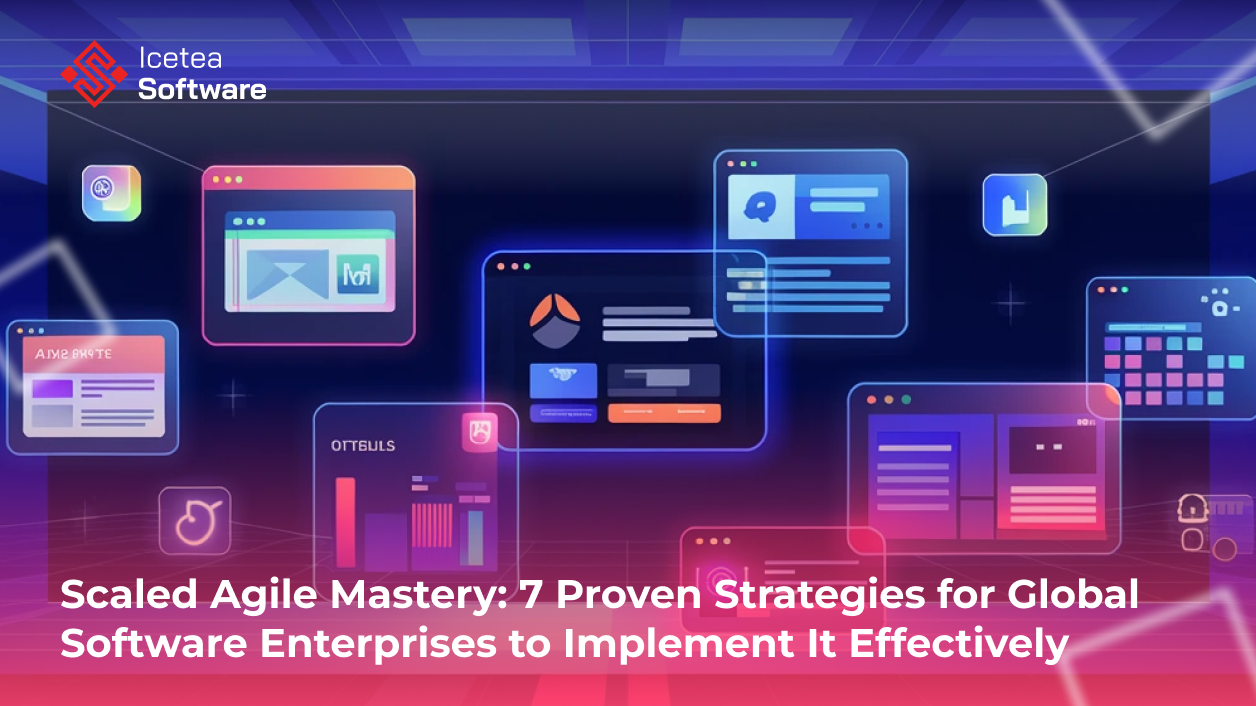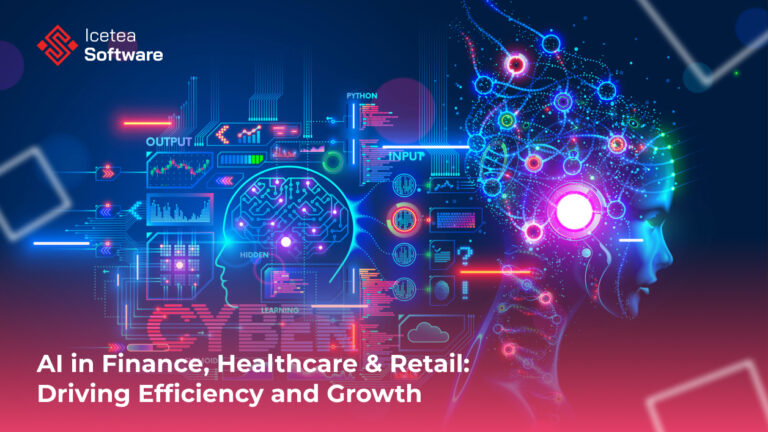Scaled Agile Mastery: 7 Proven Strategies for Global Software Enterprises to Implement It Effectively

Introduction: Why Scaling Agile Matters for Global Software Enterprises
Agile methodologies have revolutionized the way software development teams work — improving collaboration, adaptability, and speed. However, while Agile works well for small, co-located teams, global software enterprises face unique challenges when they try to scale Agile across hundreds or thousands of employees, distributed across multiple countries and time zones.
This is where Scaled Agile comes into play. Scaled Agile is not just about making Agile “bigger”; it’s about adapting Agile principles to complex organizational structures without losing the flexibility and customer-centric focus that makes Agile so powerful.
In this article, we’ll explore:
- What Scaled Agile really means
- Why it matters for global enterprises
- The 7 proven strategies top companies use to make it work
- Common mistakes to avoid
- How to measure success
What Is Scaled Agile?
Scaled Agile refers to the application of Agile principles, frameworks, and practices across large, complex organizations that operate with multiple teams, departments, and locations. It ensures that the entire organization aligns around shared goals while still empowering teams to deliver value rapidly.
Some of the most popular frameworks for scaling Agile include:
- SAFe® (Scaled Agile Framework) – Provides structured guidance for roles, responsibilities, and work planning.
- LeSS (Large-Scale Scrum) – Focuses on simplifying coordination between multiple Scrum teams.
- Spotify Model – Emphasizes autonomy and alignment through “squads” and “tribes.”
- Disciplined Agile Delivery (DAD) – A hybrid approach integrating Agile, Lean, and DevOps.
Why Global Software Enterprises Need Scaled Agile
Global software companies face challenges that smaller organizations rarely encounter:
- Distributed teams across time zones → Harder to maintain real-time communication.
- Complex product ecosystems → Multiple interdependent systems need to be developed simultaneously.
- Regulatory compliance → More layers of approvals and documentation.
- Cultural differences → Varying approaches to decision-making and collaboration.
Scaled Agile helps address these issues by:
- Establishing shared priorities across the enterprise.
- Enabling predictable delivery while maintaining adaptability.
- Fostering cross-team collaboration without bureaucracy.
- Ensuring that customer value remains the top priority.
7 Proven Strategies for Implementing Scaled Agile in Global Software Enterprises
1. Start with a Clear Vision and Executive Alignment
Without strong leadership alignment, Agile transformations fail. Leaders must clearly articulate:
- Why the organization is adopting Scaled Agile.
- What success looks like in business terms.
- How teams will be supported during the transition.
Example: Microsoft’s cloud division successfully implemented SAFe by securing executive buy-in early and consistently communicating the vision across the organization.
SEO Tip: Your vision should be part of your internal Scaled Agile playbook and communicated in every town hall, leadership meeting, and team workshop.
2. Choose the Right Framework for Your Organization
Not every framework fits every company.
- SAFe is ideal for large enterprises that need structured governance.
- LeSS works well if you want to keep processes lightweight.
- The Spotify Model is great for fostering team autonomy and innovation.
Before deciding, run pilot programs with one or two frameworks and gather feedback from teams.
Pro Tip: Avoid adopting a framework “by the book” without tailoring it — adapt it to your company’s culture, size, and product complexity.
3. Build Cross-Functional Agile Release Trains (ARTs)
In SAFe, Agile Release Trains bring together 100+ people across multiple teams to deliver value around a shared mission. This structure:
- Synchronizes planning and delivery.
- Improves transparency and predictability.
- Aligns teams around shared product roadmaps.
Example: A global banking software provider reduced feature delivery time by 35% after organizing its development teams into ARTs.
4. Invest in Agile Coaching and Change Management
A Scaled Agile transformation isn’t just a process change — it’s a cultural shift.
- Hire Agile coaches who can guide teams through daily challenges.
- Offer training programs for all levels, from executives to developers.
- Create a Change Management Office to ensure consistent adoption across regions.
SEO Tip: Including “Agile coaching for enterprises” in your content can target leadership audiences searching for professional support.
5. Prioritize Continuous Integration and Continuous Delivery (CI/CD)
Technology enables Scaled Agile to thrive. CI/CD pipelines ensure that code changes are:
- Automatically tested.
- Quickly integrated into shared codebases.
- Rapidly deployed to production or staging environments.
This reduces bottlenecks between teams and improves overall delivery speed.
6. Foster a Culture of Feedback and Transparency
Transparency is vital when dozens of teams must coordinate:
- Use visual management tools like Jira, Rally, or Azure DevOps to track progress.
- Hold Inspect & Adapt sessions to review results and adjust strategies.
- Encourage teams to share successes and failures openly without fear of blame.
Example: Atlassian’s global teams run quarterly retrospectives to ensure that lessons learned in one region benefit all other teams.
7. Measure Success with Enterprise-Level Metrics
Don’t just measure story points completed — focus on business outcomes.
Key metrics include:
- Time-to-Market – How fast new features reach customers.
- Customer Satisfaction (CSAT/NPS) – Are users happier with releases?
- Predictability Index – How closely delivery matches commitments.
- Employee Engagement – Are teams motivated and aligned?
Common Pitfalls to Avoid in Scaled Agile Implementations
Even top enterprises make mistakes when scaling Agile:
- Overcomplicating the process – Adding too many layers of bureaucracy defeats Agile’s purpose.
- Neglecting cultural differences – A one-size-fits-all approach won’t work globally.
- Skipping pilot phases – Scaling too quickly leads to chaos.
- Focusing only on processes – Agile is about mindset, not just tools and ceremonies.
Case Study: How a Global SaaS Company Scaled Agile Successfully
A multinational SaaS provider with over 3,000 engineers adopted SAFe across its development and operations teams. Key steps included:
- Running a three-month pilot in one business unit.
- Appointing regional Agile champions.
- Integrating CI/CD pipelines enterprise-wide.
- Holding quarterly planning events across all time zones.
Results after 12 months:
- 40% faster feature delivery.
- 25% increase in customer satisfaction scores.
- Significant reduction in defects reported post-release.
The Future of Scaled Agile in Global Enterprises
With the rise of AI-assisted development, DevOps, and remote-first workplaces, Scaled Agile will evolve further. We can expect:
- AI-driven backlog prioritization to speed up planning.
- Advanced collaboration tools bridging cultural and time zone gaps.
- Increased focus on customer experience metrics rather than just delivery speed.
Global software enterprises that adapt Scaled Agile to these emerging trends will remain competitive and innovative.
Final Thoughts
Scaled Agile isn’t just a methodology; it’s a strategic enabler for global software enterprises aiming to deliver value faster, adapt to change, and stay competitive in a digital-first economy.
By following the 7 proven strategies outlined in this article — from executive alignment to enterprise-level metrics — organizations can implement Scaled Agile effectively, avoid common pitfalls, and sustain long-term success.
About Icetea Software
Icetea Software is a Vietnam-based technology firm specializing in scalable, secure, and future-ready solutions in Web3, AI, and digital transformation. With operations in Vietnam and Korea, the company supports global enterprises and startups through end-to-end technology services, infrastructure development, and innovation consulting.
𝗜𝗰𝗲𝘁𝗲𝗮 𝗦𝗼𝗳𝘁𝘄𝗮𝗿𝗲 – Revolutionize Your Tech Journey!
Website: iceteasoftware.com
LinkedIn: linkedin.com/company/iceteasoftware
Facebook: Icetea Software
X: x.com/Icetea_software







